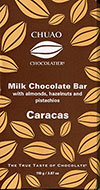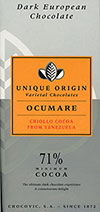The Story of a Ten-Minute Argument Between Two Great Philosophers
David Edmonds, John Eidinow
Harper Perennial, ISBN 0060936649, Publisher, Buy online
 Plato is one of the sacred cows of the philosophy establishment. Whitehead famously wrote: “The safest general characterization of the European philosophical tradition is that it consists of a series of footnotes to Plato”. That said, his political theories are utterly indefensible. His attitude towards the Spartans who defeated and occupied his native Athens (and abolished the democracy the aristocratic Plato hated so much) would in modern terms be classified as that of a Quisling. His proposals are those of a soulmate of Pol Pot: a totalitarian society with a rigid caste system. In Plato’s ideal society, the philosopher-king caste rules through lies and deception1, children are removed from their parents to be brainwashed by the state, if they are allowed to survive the state’s eugenic culling of the weak in the first place. Dissidents are interned in reeducation camps and killed if they do not eventually recant. Given such moral bankruptcy, it is hard to take anything else he wrote seriously.
Plato is one of the sacred cows of the philosophy establishment. Whitehead famously wrote: “The safest general characterization of the European philosophical tradition is that it consists of a series of footnotes to Plato”. That said, his political theories are utterly indefensible. His attitude towards the Spartans who defeated and occupied his native Athens (and abolished the democracy the aristocratic Plato hated so much) would in modern terms be classified as that of a Quisling. His proposals are those of a soulmate of Pol Pot: a totalitarian society with a rigid caste system. In Plato’s ideal society, the philosopher-king caste rules through lies and deception1, children are removed from their parents to be brainwashed by the state, if they are allowed to survive the state’s eugenic culling of the weak in the first place. Dissidents are interned in reeducation camps and killed if they do not eventually recant. Given such moral bankruptcy, it is hard to take anything else he wrote seriously.
One wonders why Plato’s popularity among philosophers remains undimmed. Perhaps this has to do with vanity, as many a philosophy professor toiling in mediocrity no doubt fancies himself an unjustly overlooked candidate for the position of philosopher-king. As related by Plutarch, Plato himself, exiled from Athens by the restored democracy, sought to flatter Denys (Dionysius), the tyrant of Syracuse, by extolling the latter’s putative virtues as a philosopher, in order to induce him to follow the program exposed in The Republic. Denys demonstrated that even tyrants sometimes show wit2, dismissed Plato, and even considered enslaving the fawning philosopher so that he may experience a taste of what he advocated for others.
Another explanation may lie in Plato’s polemics against the Sophists. The Athenian democracy did not allow the use of lawyers in judicial proceedings, but the rich found a work-around: they hired specialists, essentially professors of rhetoric, to rehease trials. The Sophists would often boast that they could “prove” something and its opposite. This is a valuable, if somewhat debased skill, but it also has the side effect of destroying the credibility of philosophical methods, something Plato and his later admirers obviously object to. The Sophists were essentially skeptics and relativists, post-modernists over two millennia before post-modernism became fashionable. Plato’s was entirely successful in blackening their name, and the professional philosopher class no doubt owes some atavistic gratitude to him for that masterful propaganda.
Criticism of Plato’s views was mostly timid and limited to an audience of specialists, until Karl Popper revealed it for what it was in his blistering (and justifiably so) magnum opus of 1945, The Open Society and its Enemies: The Spell of Plato, although Bertrand Russell made pretty much the same points in his contemporary History of Western Philosophy. In his book, Popper exposes Plato as the wellspring for both Nazi and Communist totalitarism.
Popper was also a specialist in epistemology, the study of how knowledge is acquired, in science or elsewhere. His criterion of falsifiability (a theory is scientific only if it can be proven false), while not necessarily offering the practical guidance he hoped for, is still the best litmus test for whether a theory belongs to the realm of science (as in Darwin’s theory of Evolution) or not (as with creationism or its dissembling sibling, “Intelligent Design”).
As he believed in the worth of this endeavor, he had little patience for the hollow, superficial brilliance of a Ludwig Wittgenstein (I do not mean in any way to imply equivalence between Wittgenstein and a charlatan like, say, Derrida). Wittgenstein’s Poker retraces the background and history of the sole, explosive encounter between the two Austrians. Wittgenstein allegedly threatened Popper with a red hot fireplace poker, then stormed away in a huff. Debate still rages about exactly what happened, despite no dearth of witnesses, a testimony of sorts to the fallibility of human memory and the limits of the search for knowledge.
The book slowly and methodically lays the background behind the men’s confrontation. Both were born in assimilated Jewish families of Vienna, but the similarity ends there. Wittgenstein was the son of an immensely wealthy industrialist, and his brilliance was widely and immediately acknowledged by his peers. Popper’s middle-class family lost its savings in financial collapse, and he long had to struggle for both a living and recognition. The authors do a reasonably good job at explaining the philosophical differences between the two men in laymen’s terms. While both were refugees from the Nazis, the book’s insistence on their Jewish background as a major factor on their outlook seems a stretch.
After all this preparatory work, the description of the argument itself is a let-down. It is rather hurried, and makes too many unwarranted assumptions on the psychological state of mind of the protagonists, bordering on a fictionalized account.
1: Interestingly, this concept of the “noble lie” was revived by the so-called neo-cons, many of whom are followers of Leo Strauss, an admirer of Plato. This only goes to show the enduring relevance of Popper’s Open Society.
2: In another instance, Argentina’s Juan Perón “promoted” his critic Jorge Luis Borges to inspector for poultry and rabbits at the Buenos Aires municipal market. Borges reacted with vitriol, but his later approbation of the 1976 junta puts the lie to any grandiose claims of principle.
 I am partial to milk chocolate with high cocoa content. It combines the best of both worlds: the rich flavor of dark chocolate, and the smoothness of milk chocolate. The better grades will be made of cocoa coming from a single region, ideally Venezuelan criollo. The natural candidate would be El Rey, a Venezuelan maker, but I don’t like the milky aftertaste of their Caoba 41% cocoa bar. My favorite, Michel Cluizel, makes superlative bars with 50% cocoa content, but the cocoa is from Java or Madagascar. They even used to have a 60% bar blended with almond cream, unfortunately it seems to have been discontinued.
I am partial to milk chocolate with high cocoa content. It combines the best of both worlds: the rich flavor of dark chocolate, and the smoothness of milk chocolate. The better grades will be made of cocoa coming from a single region, ideally Venezuelan criollo. The natural candidate would be El Rey, a Venezuelan maker, but I don’t like the milky aftertaste of their Caoba 41% cocoa bar. My favorite, Michel Cluizel, makes superlative bars with 50% cocoa content, but the cocoa is from Java or Madagascar. They even used to have a 60% bar blended with almond cream, unfortunately it seems to have been discontinued. Plato is one of the sacred cows of the philosophy establishment. Whitehead famously wrote: “The safest general characterization of the European philosophical tradition is that it consists of a series of footnotes to Plato”. That said, his political theories are utterly indefensible. His attitude towards the Spartans who defeated and occupied his native Athens (and abolished the democracy the aristocratic Plato hated so much) would in modern terms be classified as that of a Quisling. His proposals are those of a soulmate of Pol Pot: a totalitarian society with a rigid caste system. In Plato’s ideal society, the philosopher-king caste rules through lies and deception1, children are removed from their parents to be brainwashed by the state, if they are allowed to survive the state’s eugenic culling of the weak in the first place. Dissidents are interned in reeducation camps and killed if they do not eventually recant. Given such moral bankruptcy, it is hard to take anything else he wrote seriously.
Plato is one of the sacred cows of the philosophy establishment. Whitehead famously wrote: “The safest general characterization of the European philosophical tradition is that it consists of a series of footnotes to Plato”. That said, his political theories are utterly indefensible. His attitude towards the Spartans who defeated and occupied his native Athens (and abolished the democracy the aristocratic Plato hated so much) would in modern terms be classified as that of a Quisling. His proposals are those of a soulmate of Pol Pot: a totalitarian society with a rigid caste system. In Plato’s ideal society, the philosopher-king caste rules through lies and deception1, children are removed from their parents to be brainwashed by the state, if they are allowed to survive the state’s eugenic culling of the weak in the first place. Dissidents are interned in reeducation camps and killed if they do not eventually recant. Given such moral bankruptcy, it is hard to take anything else he wrote seriously.


